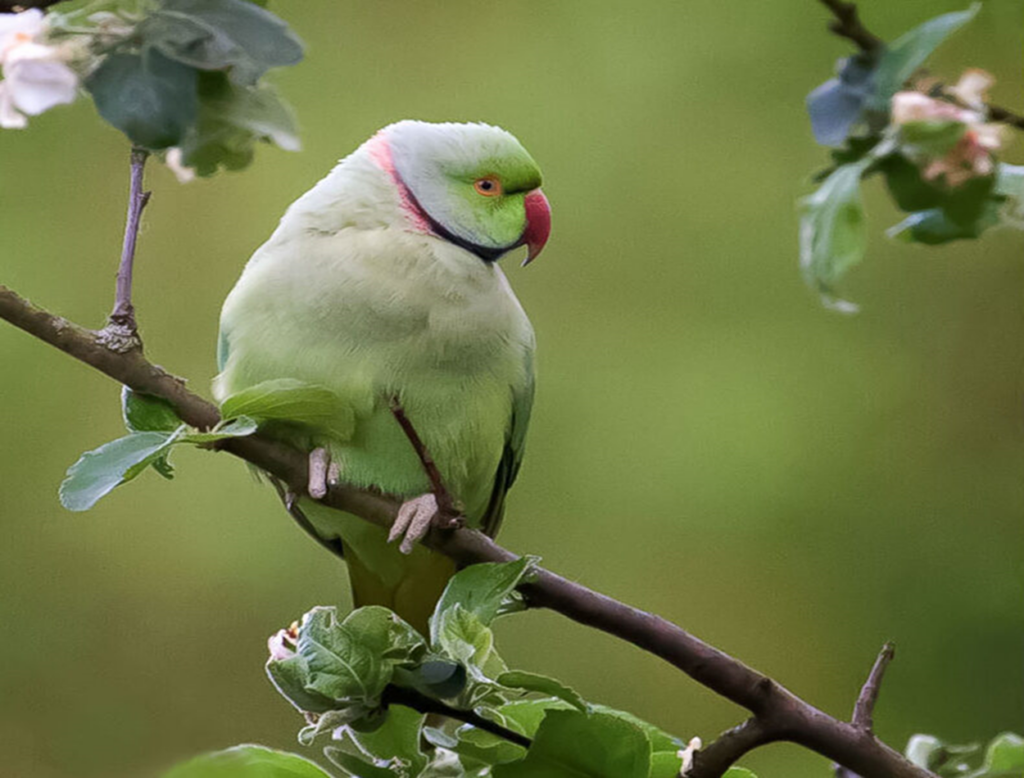Renowned for its cultural heritage and diverse wildlife, Brussels has become a focal point for ornithologists, thanks to a unique characteristic exhibited by its resident monk parakeets – an intriguing call that has raised questions about the origins of this distinct sound.
Native to South America, monk parakeets have established colonies in various European cities, with an estimated population exceeding 20,000 across the continent. Typically, these colonies arise when ornamental birds escape captivity or are intentionally released.
In Brussels, where monk parakeets are less prevalent than their ring-necked counterparts, the birds exhibit remarkable nesting behaviour, constructing apartment-like structures with individual entrances, each inhabited year-round.
The recent attention stems from the distinctive call observed in Brussels. Ornithologists, led by researchers conducting a comparative study across Spain, Italy, Greece, and Belgium, have noted that the Brussels parakeets have incorporated a unique cry of alarm into their call.
"The contact call in Brussels really stands out," researcher Simeon Smeele told De Standaard. "What is unique is that the Brussels parakeets have a cry of alarm, with a rapid alternation of high and low notes."
A unique development
Intriguingly, while monk parakeets in their native South American habitat show no regional variations in their calls, the Brussels population seems to have developed a unique vocal adaptation. This anomaly is thought to be a result of a potential copying error within a small founding group, with the relatively isolated nature of the Brussels community contributing to its continued use.
The study prompts questions about why the Brussels population stands out compared to other invasive groups. Some experts suggest that background noise in Brussels may have influenced the adapted call, but researchers argue that ambient noise differences between parks do not correlate with the observed vocal distinctions.
The origin of the birds in Belgium is disputed, with a prevailing theory suggesting that the first population was established when a disenfranchised manager of the closed branch of the Meli Parc in Heysel released them from the park’s aviary around 1974.
Adrien Chevalier, head of the biodiversity mission at the Royal Belgian League for the Protection of Birds (LRBPO), told The Brussels Times: "There are already three species of parakeet present in Brussels. The one we see most is the ring-necked parakeet, and it is usually the one said to have escaped the amusement park in Heysel. The other two species are the alexander parakeets, which are similar but a bit larger, and the monk parakeet, which builds big ball nests in some places."
Local impact
As the monk parakeet population potentially expands in Belgium, particularly in cities like Ghent, concerns about its impact on local ecosystems arise. Despite the species adapting well to cold winters and demonstrating nest-building capabilities, worries persist about labelling it a high-risk invasive species.
Flying in flocks, with up to 1,000 birds occupying a single tree, the monk parakeets are sometimes labelled as "invasive," although Chevalier added that they cause very few problems. He emphasised that the birds, though visible and noisy, have not been observed to adversely affect local biodiversity.
"Our local birds are not doing well, but they’re not doing any worse since the parakeet arrived," Chevalier clarified.
As these vibrant birds continue to captivate researchers and residents alike, the unique call of the Brussels monk parakeets stands as a testament to the fascinating adaptations emerging in the dynamic urban ecosystems of Europe.

